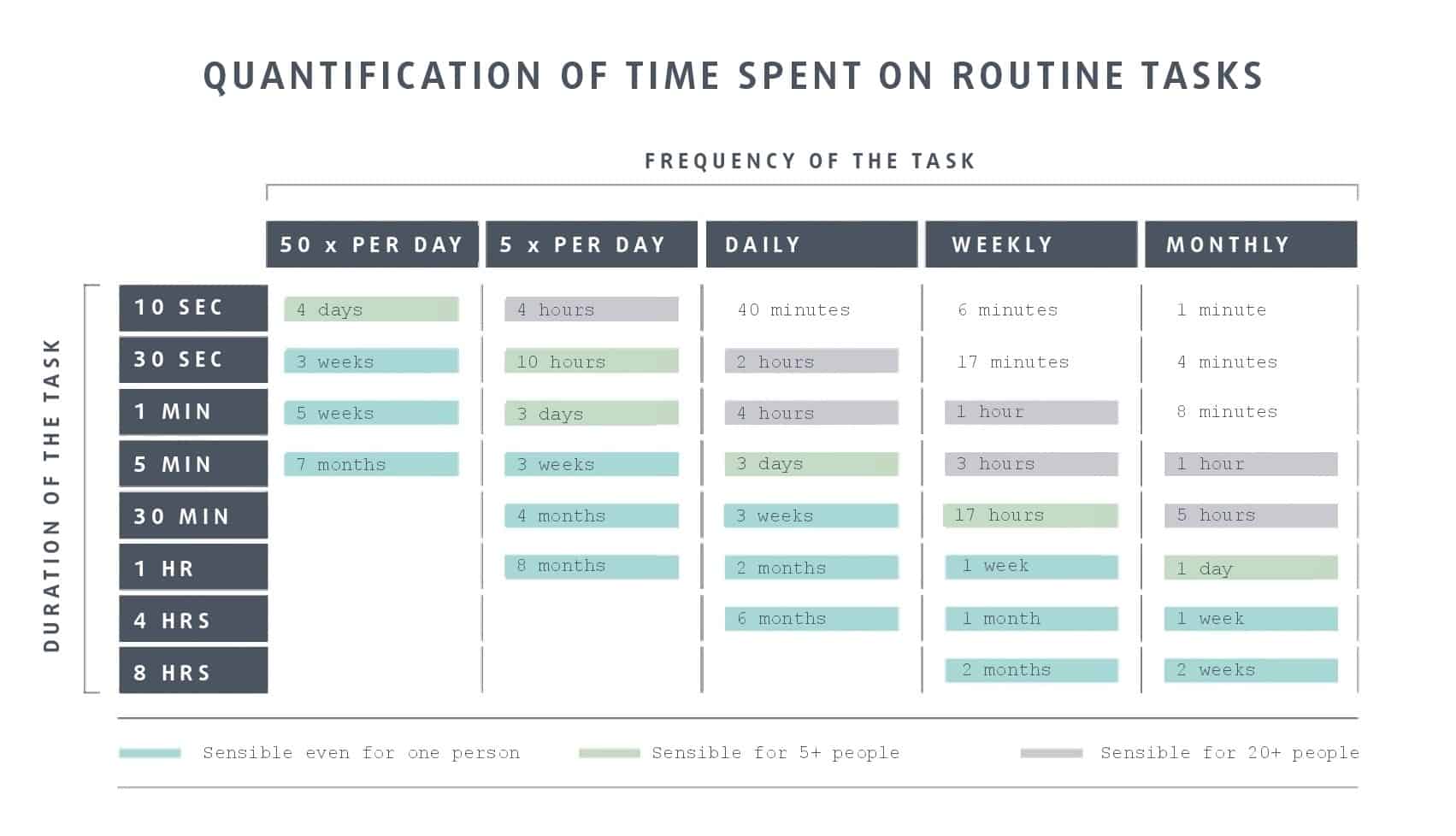Work smarter, not harder
AUTOMATION AND DIGITALIZATION
Work smarter, not harder
Everyone saw it coming, everyone has been talking about it for years – and recently it has become the number one topic in companies: the shortage of skilled workers. Automated processes that increase productivity and at the same time meet the expectations of the digital-savvy Generation Z promise a remedy. Solutions such as those offered by Lurse Technology Solutions.
Everyone with personnel responsibility in this country knows it: German companies are having increasing difficulty filling vacancies with qualified employees. For the study “Trends in Compensation and HR”, Lurse surveys several hundred HR managers from all industries every year. When asked about the most important issue in HR work, 82 percent of the participants in the current study named the problem of the shortage of skilled workers. This corresponds to an increase of no less than 19 percent compared to the previous year and moves the topic from fifth place to first place in the ranking of the most pressing HR issues for the first time.
There are current reasons for this jump, such as the waning of the Corona crisis, but the deeper cause is demographic change. Experts predict that the number of people in the labor force in Germany will fall by a third by 2060. Even an annual immigration of several hundred thousand people will only be able to limit the decline, but not stop it. The logical conclusion is that if we want to maintain our prosperity and German companies to continue to be successful, fewer people will have to do more.
Automation: challenge and opportunity
“To increase productivity per capita, advances in automation and digitization are needed. This is not just a matter for IT and HR departments, but for all employees,” says Florian Soter, Managing Partner at Lurse Technology Solutions. “An appropriate mindset also holds the opportunity to make work, and thus the company, more attractive to young talent.”
Digital tools and platforms make it possible to use time and manpower more intelligently. Not only in production, but also in the administrative and service sectors, repetitive activities can be completely automated and digitized. This also accommodates the mentality of Generation Z. After all, many of those born in the new millennium don’t want to do the same repetitive tasks over and over again if there are better, technological solutions for them.

Which activities can be automated?
In principle, all repetitive tasks are suitable for automation solutions, including
- Almost all work steps that are controlled via Excel today,
- documentation that can be synchronized with the calendar, such as vacation requests or the tracking of workdays, whether at the company workplace or in the home office,
- the unique naming of documents,
- the visualization of company key figures,
- collection and exchange of data, and much more.
To illustrate with a concrete example: In many companies, vacation requests are submitted to the HR department by e-mail. The HR department exchanges information with the employee’s supervisor and then enters the vacation days itself. Communication, exceptions and changes always cause a certain amount of work. In addition, the reciprocal information is often not transparent. All this can be avoided relatively easily. As a solution, Lurse Technology Solutions proposes a Power App to its customers, via which all employees enter their desired vacation times themselves. The responsible managers are automatically informed about the respective requests and can process them. A Logic App automatically maintains the entered data, and the relevant information can be viewed by everyone involved at any time. This speeds up the entire process and makes communication more efficient. Up-to-dateness and transparency of the information are ensured, as is the consistency of the data.
Order processes can also be structured and thus automated with the help of a Power App. Another example is data-driven marketing. Using logic apps, a company can integrate customer information from a wide variety of sources. It then evaluates this via a voice AI and analyzes it in PowerBI. This gives them a strategic advantage over their competitors. The list of automation solutions could go on and on, from data exchange platforms and form recognition via AI to the replacement of legacy systems in Lotus Notes, Excel, Access etc. But what about the necessary tools?
The toolbox is well filled
“The good news is that many companies already have the necessary tools, they just don’t apply them, unfortunately,” says Florian Soter. The Microsoft Suite in particular offers numerous opportunities to automate processes. This is because most companies have license agreements with Microsoft for their standard software, which already include licenses for automation tools. So they can set up these applications without additional licenses. Often, these work with low-code solutions or no code at all. This allows applications and automations to be created more quickly and cost-effectively, often without the need for professional developers. Administration and further development are also much faster and cheaper than with custom software created in-house.
Until now, applications and software solutions were mainly topics that IT specialists in companies dealt with. As described, however, the potential of automation lies in the operational area. It is about processes, onboarding, crossboarding or offboarding of employees, approval processes or conducting employee appraisals. In other words, processes that occur on a daily basis in every specialist department and that have so far mostly been solved without IT. “This means that it takes every single employee to activate the potential of automation,” explains Florian Soter. “It’s a matter of creating awareness of the possibilities and opportunities of automation.”
Attracting young talent automatically
So the advantages are obvious: Automated processes are faster and more accurate than manual ones. They can always be rescaled to handle large amounts of data or transactions. This reduces costs, increases a company’s efficiency and expands its freedom of action.
Last but not least, employees also benefit from the advantages. They are relieved of repetitive, time-consuming work through automation and can concentrate on more important, satisfying and value-adding tasks. They are given the opportunity to expand their knowledge and skills and pursue new ideas. In addition, access to the tools and information they need gives them the opportunity to work flexibly, for example from home. Young Generation Z employees in particular attach particular importance to work-life balance and their job satisfaction.
In short: automation and digitization are indispensable tools in the fight against the shortage of skilled workers. They are indispensable for attracting and retaining top talent and for fostering a collaborative and innovative culture within the company. The ideas are there, the opportunities are there, and the tools are there. It’s just a matter of using them.



